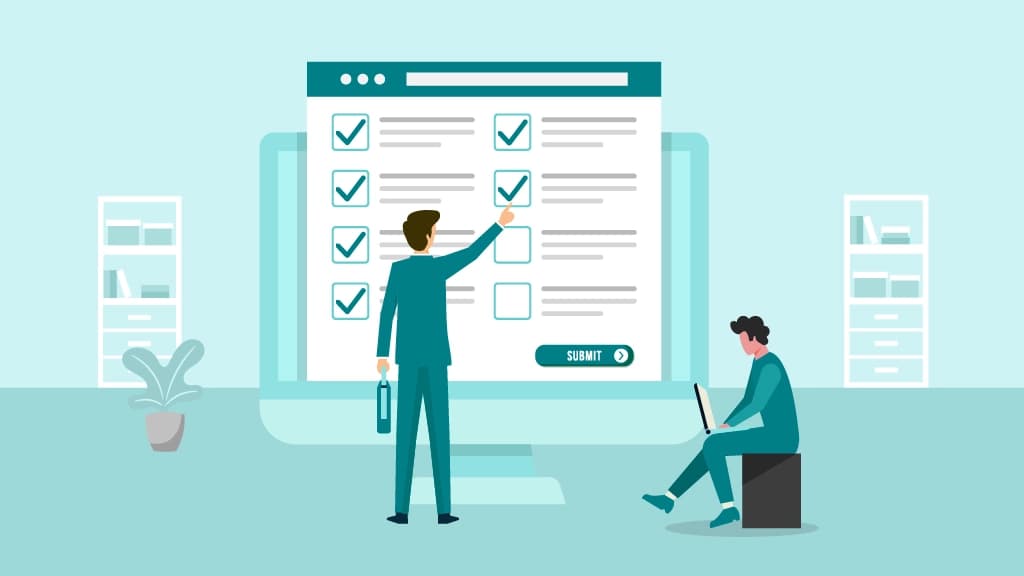Remote Employee Onboarding Done Right – A comprehensive checklist

Team AdvantageClub.ai
March 29, 2025

Remote work has been steadily increasing in recent years. As evidently it becomes the new norm, companies around the world are facing the challenge of effectively onboarding their remote employees. When compared to in-person onboarding, remote employee onboarding presents unique obstacles.
Remote employee onboarding is a complex process with numerous players and stages beginning before the first day. Employee engagement and retention require significantly effective remote onboarding. According to a Gallup survey, companies that successfully engage employees in onboarding certainly had 31% higher retention rates. The first 90 days of new employment are especially essential to your and your workers’ long-term success.
A well-planned remote onboarding process can make or break recruit retention by all means. In fact, as per LinkedIn, 64% of new hires report quitting a company due to poor onboarding. Remote onboarding takes a new method and a well-structured checklist to enable a smooth transition into the organization, unlike typical onboarding processes involving face-to-face meetings and physical office locations. Certainly, you must be focused and organized to get it right. In other words, you must have a plan and stick to it.
Checklist for Remote Onboarding
Streamlining the remote onboarding process sets your employees up for success from day one. Team Advantage Club is sharing the detailed remote onboarding checklist for the first 90 days. The checklist covers all the essential steps and considerations to help you navigate the unique challenges of onboarding remotely. Here’s a day-by-day checklist for remote onboarding employees for the first 90 days, outlining the responsibilities of the manager, HR, and the employee:
Day 1 to Day 30 : Initiate, Orient
This phase is intended to provide the new hire with a good, productive experience by connecting the new hire to the corporate culture, setting goals, and beginning to become productive.
Day 1- Preparing for Onboarding
- Manager: Introduce yourself and show your excitement for the new employee's arrival in an email. Set up a video chat or virtual meeting to greet the employee, introduce them to the company, and review the onboarding process with them.
- HR: Provide the employee with any essential papers and forms, such as employment contracts, tax forms, and confidentiality agreements. Give the employee information and support in completing the necessary documents.
- Employee: Examine and complete all necessary documentation and forms. Create the accounts and access credentials required for company systems and tools. Make themselves familiar with the company's remote work regulations and procedures.
Day 2 - Introduction and Orientation
- Manager: Arrange one-on-one meetings with key team members to introduce the new hire and encourage casual connections. Assign the new employee a buddy or mentor for guidance and support.
- HR: Give the new employee an orientation package with crucial materials, including the handbook, code of conduct, and related policies. Hold a virtual orientation session to give employees an overview of the company's culture, beliefs, and expectations.
- Employee: Attend virtual team meetings and introductions. Examine the HR-provided orientation package and get clarity on any questions or concerns.
Day 3 - Assign and explain
- Manager: Explain at length to the employee their unique role, responsibilities, and expectations. Discuss and establish the first goals or tasks for the employee.
- HR: Set up virtual meetings with representatives from several departments to familiarize employees with cross-functional teams and partnerships. Provide additional training or materials relevant to the employee's function or industry.
- Employee: Attend meetings with various department representatives to learn about their functions and how they intersect with the employee's role. Begin to become acquainted with their given responsibilities and projects.
Day 4
- Manager: Schedule a meeting with the employee to touch base, address any inquiries or worries they may have, and offer preliminary feedback and direction. Assign or recommend appropriate training or learning resources to help the employee grow.
- HR: Communicate and clarify the employee's performance evaluation methods and timetables. Advise on best practices for remote work, time management, and communication etiquette.
- Employee: Seek feedback and clarity on allocated tasks or projects. Begin by engaging with the learning tools and training materials offered.
Day 5 - Check-in to the social network
- Manager: In order to create team connections and engagement, encourage the employee to participate in virtual team-building activities or social events. Schedule regular check-ins with the employee to track progress and resolve any issues.
- HR: Inform the employee about available assistance services and channels, such as IT support or HR hotlines. Encourage the employee to join employee networks and internal communication tools.
- Employee: Participate in virtual team-building activities or social events. Prepare any questions or concerns to share with the manager during the forthcoming check-in meeting.
Day 6, 7 - Gather feedback and reflect
- Manager: Hold a check-in meeting to review the employee's first week, address any problems, and provide comments and direction. Discuss the progress of the employee on allocated tasks or projects.
- HR: Gather employee feedback on their onboarding experience and make any necessary changes or improvements. Provide additional information about career growth opportunities inside the organization.
- Employee: During the check-in meeting, discuss any issues or questions with the management. Reflect on the onboarding process and, if required, provide input to HR.
Day 8 to 14
- Manager: Schedule a touch-down appointment with the employee to discuss their progress, address any issues, and provide direction or extra resources as needed. Assign the employee additional assignments or projects related to their function and development. objectives.
- HR: Provide opportunities for additional training or skill development based on the employee's function and recognized areas for improvement. Inform others about internal resources or online learning platforms for continuous professional development.
- Employee: Seek feedback on finished tasks or projects from the management or team members. Continue to improve your skills and knowledge by participating in allocated training or self-directed learning.
Day 15 to 21
- Manager: Hold a performance review meeting to assess the employee's progress, provide feedback, and explore areas for improvement. Create or revise new goals based on the employee's performance and the organization's priorities.
- HR: Discuss with the employee professional development opportunities such as mentorship programs, job rotations, or specialized training. Provide the employee with resources or support to help them advance in their careers.
- Employee: Consider the feedback received and make changes to improve performance. Discuss your professional goals and prospective growth prospects with your boss or human resources.
Day 22 to 29
- Manager: Set up a mid-onboarding review meeting to evaluate the employee's overall development, address any concerns, and provide support or guidance. Encourage the individual to work with other teams or departments in order to have a broader perspective of the organization.
- HR: Collect feedback from employees regarding their onboarding experience to pinpoint areas that need improvement and make any necessary changes. Inform the employee about networking opportunities or virtual events that can help the employee's professional relationships.
- Employee: Participate in cross-functional projects or initiatives to obtain experience in many areas of the company. If HR requests it, provide positive input on the onboarding process.
Day 30
- Manager: Conduct a thorough performance evaluation, examining the employee's accomplishments, strengths, and opportunities for improvement. Discuss future goals, projects, or tasks to keep the employee motivated and interested.
- HR: Discuss with the employee the performance evaluation process, including dates and expectations. Provide information on accessible resources or assistance with continuous professional development.
- Employee: Examine the performance evaluation feedback and consult with the management if you have any questions or concerns. Based on the review and professional aspirations, create new goals and targets for the following months.
Day 31 to Day 60 : Connect, Converse
Day 31 to 44
- Manager: Schedule a check-in meeting with the employee to assess his or her progress since the last evaluation, provide feedback, and discuss any necessary adjustments or improvements. Assign new projects or tasks corresponding to the employee's abilities and development objectives.
- HR: Inform employees about advanced training or professional development possibilities that can help them improve their skills and expertise. Provide resources or assistance to the employee so that they can continue to flourish within the organization.
- Employee: Seek feedback on finished projects or tasks from the management and team members. Seek opportunities to broaden your knowledge and abilities through allocated training or self-directed learning on a regular basis.
Day 45 to 59
- Manager: Hold a performance review meeting to evaluate the employee's progress, discuss accomplishments, and provide constructive suggestions for future improvement. Determine where the individual can take on additional duties or contribute to larger projects.
- HR: Meet with the employee to discuss long-term career development aspirations and identify potential growth prospects within the firm. Advise on developing a customized development plan to meet the employee's career goals.
- Employee: Consider the feedback obtained and put it into action. Discuss your professional goals and potential prospects for advancement with your boss and HR.
Day 60
- Manager: Conduct a complete performance appraisal of the employee's accomplishments, strengths, and opportunities for development during the last 60 days.Discuss future goals and projects, ensuring they align with the employee's performance and the organization's goals.
- HR: Provide information on advanced training programs, certifications, or specialized learning opportunities that can help employees improve professionally. Discuss prospective career progression opportunities and offer advice on how to pursue them inside the organization.
- Employee: Examine the performance evaluation feedback and consult with the management if you have any questions or concerns. Based on the review and professional aspirations, create new goals and targets for the following months.
Day 61 to Day 90 : Listen, Learn
Day 61 to 74
- Manager: Schedule a check-in meeting with the manager to address the employee's progress, successes, and any lingering issues. Provide feedback on the employee's performance and suggestions for improvement.
- HR: Inform employees about leadership development programs or opportunities to improve their managerial skills. Provide resources or assistance to the employee in order for them to continue their professional growth and development.
- Employee: Seek feedback on recent projects or assignments from the management and team members. Determine which areas require further development or improvement.
Day 75 to 89
- Manager: Conduct a mid-term performance evaluation to examine the employee's progress, strengths, and development needs. Set new goals and objectives for the remaining onboarding period in collaboration with the employee.
- HR: Discuss long-term career aspirations and potential prospects for advancement within the organization. Provide resources or assistance for the employee's continuous growth and advancement.
- Employee: Consider the feedback received and correspondingly make any necessary changes. Discuss your professional goals and future growth opportunities with your manager and HR.
Day 90
- Manager: Conduct a comprehensive performance evaluation, reviewing the employee's achievements, strengths, and areas for improvement during the onboarding period. Discuss future goals, projects, or responsibilities that concurrently align with the employee's skills and the organization's objectives.
- HR: Review the employee's performance and guide further professional development opportunities. Discuss at length potential career paths and advancement within the organization.
- Employee: Review the performance evaluation feedback and additionally discuss any questions or concerns with the manager. Lastly, set new goals and objectives for the upcoming months based on the evaluation and career aspirations.
Use the initial 90 days to create loyalty as well as lay the groundwork for success. After all, giving your new hires a warm welcome will demonstrate to them why they should desire to stay with you. The process is designed to motivate employees as they gain more independence and increase their productivity in the long run. Also, they gain a sense of belonging as they build social bonds and learn about their role within the firm and its culture.
The Remote employee onboarding checklist can be tailored to your organization’s unique requirements and schedules, all in all, guaranteeing a successful and productive remote onboarding experience.






